Ant mimicry or myrmecomorphy is mimicry of ants by other species. Why would other organisms want to pretend to be an ant? This has to do with ants being either unpalatable or known to be aggressive towards certain species. The mimicking species might hide among ants, infiltrate their nests and steal or feed on their brood or even hunt them while being unrecognized.
They also profit from the fact that i.e. birds know, that ants are not good prey because they simply do not taste due to their acids. This has been observed with Synageles venator, an ant-mimicking jumping spider, that resembles an ant visually. We will learn more about this species later.
Ants are one of the most abundant insects on Earth with over 12,000 known species. Their success comes from living in complex, cooperative colonies that can aggressively defend resources. This makes ants a risky prey choice for predators. So it’s no surprise that many spiders have evolved amazing adaptations to mimic ants in appearance and behavior. This mimicry helps them avoid becoming prey while also enabling them to sneak up on real ants to eat. Read on to learn all about these clever imposters!
Why Do Spiders Mimic Ants?
Mimicry provides major advantages to spiders seeking to avoid larger predators Birds, wasps, and bigger spiders are all deterred by ants’ painful bites and mass attacks If a spider resembles an ant, these predators will avoid it. This is called Batesian mimicry.
Aggressive mimicry also helps predatory spiders stalk real ants as prey The disguise allows stealthy spiders to get close to ants before pouncing Some spiders even live near ant nests, smelling like ants (Wasmannian mimicry) to hide from other predators.
Physical Adaptations That Make Spiders Look Like Ants
To pull off their deception, ant-mimicking spiders have evolved striking physical adaptations:
-
Elongated, skinny bodies and legs to match ant proportions
-
Constricted waists to mimic ants’ 3 body segments (spiders have 2 segments)
-
Coloration matching local ants like black, brown, red
-
Dark patches that resemble ant eyes
-
Legs adapted to mimic ant antennae
Let’s look at some of the best ant-mimicking spiders and their uncanny adaptations.
14 Spiders That Look Like Ants
1. Myrmarachne Formicaria
This common jumping spider is so ant-like that even experts can be fooled! Found worldwide, they perfectly mimic ants. Their front legs even wave around pretending to be antennae.
2. Castianeira Variata
While not a perfect mimic, this spider copies ant behaviors like zig-zag walking. When threatened, it shakes its front legs as “fake” antennae.
3. Phrurotimpus Borealis
Despite looking more spider than ant, this species acts like an ant, repeatedly bobbing its body. It relies on behavior over appearance.
4. Myrmarachne Melanocephala
With its vivid orange head and black and white striped body, this jumping spider resembles a fuzzy velvet ant. Its dramatic colors may mimic ants’ painful stings!
5. Myrmarachne Japonica
This Japanese species has a segmented body so ant-like that only its large front eyes give it away as a spider. It waves its legs pretending they’re antennae.
6. Castianeira Longipalpa
Ranging from pale white to black, this spider’s impression of an ant mainly relies on mimicking their zig-zaggy search patterns.
7. Myrmarachne Luctuosa
An Australian ant mimic, this jumping spider has an elongated, skinny body marked by two black “eyes” on its abdomen.
8. Synemosyna Formica
Living near ant nests, this spider smells like ants for added protection. Its narrow body also disguises it as a small worker ant.
9. Castianeira Descripta
With bold red stripes on its black body, this spider is sometimes mistaken for the dangerous black widow! Mimicking the stripes helps deter predators.
10. Castianeira Amoena
No true ant has this spider’s vivid orange coloring. It’s likely mimicking painful velvet ants instead with its bright warning colors.
11. Sergiolus Montanus
Also thought to mimic velvet ants, this ground spider has colorful bands on its body as a “don’t mess with me!” signal to predators.
12. Castianeira Cingulata
The dead giveaway that this isn’t an ant are its 8 legs. But the dark colors and light bands help it impersonate ants from a distance.
13. Myrmaplata Plataleoides
This specialist ant-mimic lives near red weaver ant nests in Asia. It cleverly waves just 2 legs like antennae, unlike ants’ real 6 antennae legs.
14. Amyciaea Forticeps
A crab spider that sits motionless with its legs folded, resembling an ant. It then waves its front legs to lure in curious real ants to eat.
The Intricate Challenges of Mimicry
As we’ve seen, mimicry involves more than just looking like an ant. The best imposters also walk, behave, and even smell like ants, requiring complex adaptations. They must fool sharp predator senses beyond human vision.
Yet ant-mimics still need to identify their own kind for mating. Some spiders may retain courtship behaviors that reveal their true arachnid form. Others likely rely on pheromones spiders use to attract mates.
These challenges make ant mimicry all the more incredible! Next time you see an “ant” wandering around, look closely. You may have spotted one of these clever spiders in disguise!

Benefits and risks of mimicry
Spiders are actually some the most common ant mimics and mimic them anatomically and behaviorally: pedipalps may resemble the ant´s mandibles, legs are often coloured to appear thinner, more ant like, and used to imitate antennae by lifting them off the ground and waving them in the air. The colours of the ants are also mimicked by the spiders, which often have elongated abdomens to match the ant´s anatomy.
While the mentioned benefits of the mimicry can lower the risks to fall prey to ant-averse predators there is a downside to the fact as well. Predators specialising on ants will now more likely pose a threat for the spider. The morphological adaption of the spiders abdomen to the look of the ant results in a decreased number of eggs that the spider can produce.
There are always two sides to every coin. Living among ants puts any ant-associating spider in grave danger anyways.
Let us take a look at how these spiders, that have managed to evolve into such perfect ant look-alikes, do actually look and compare to their models. The selected species are mainly jumping spiders but also one very special species of Micaria. This one is not only a perfect ant-mimic, but also a spectacular looking spider in general. Up-close there are beautiful colours to discover, while, with the bare eye, it looks identical to a uniform-coloured ant.
Synageles venator (Lucas, 183 – Germany
This species lays very few eggs, which suggests they have a high chance of surviving due to the mimicry being very effective. In an experiment where birds were fed ants and later Synageles venator, it became obvious that the birds did not feed on the spiders after having experienced a negative effect from the ingestion of the ants, or, to be more precise, from their acids. This shows how effective the mimicry is and that it definitely has a defensive component.

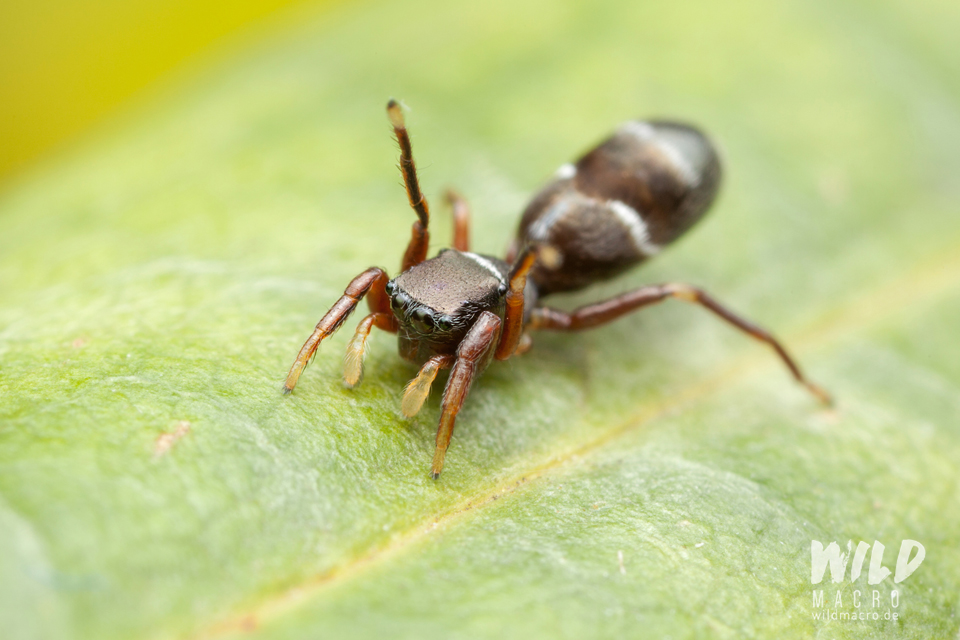
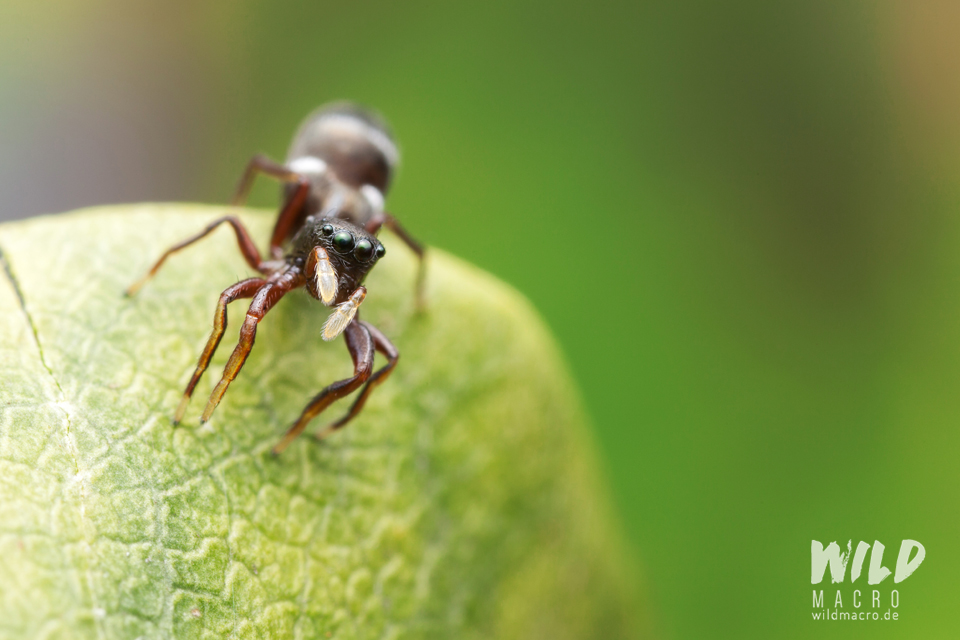
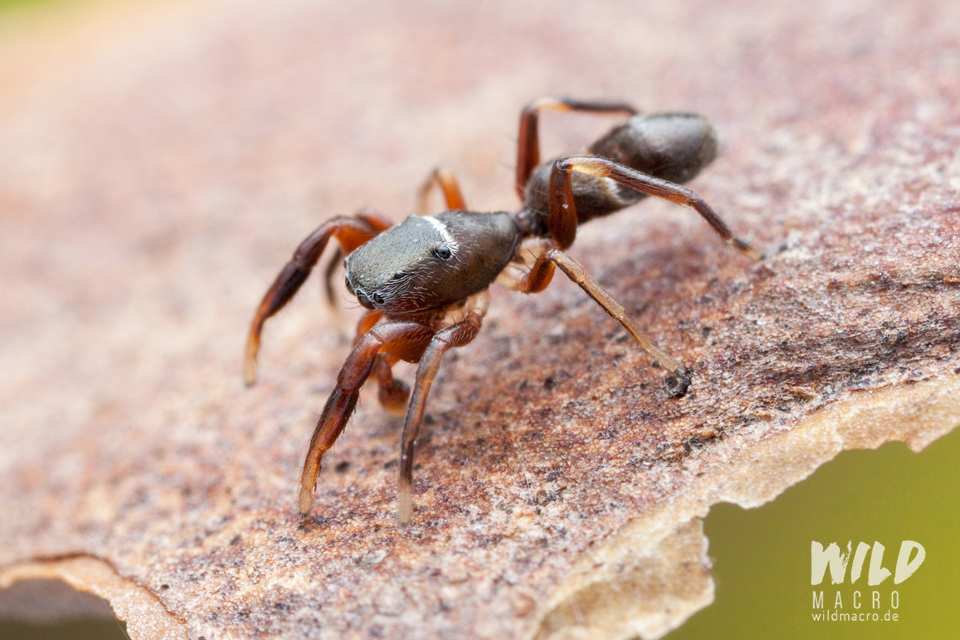

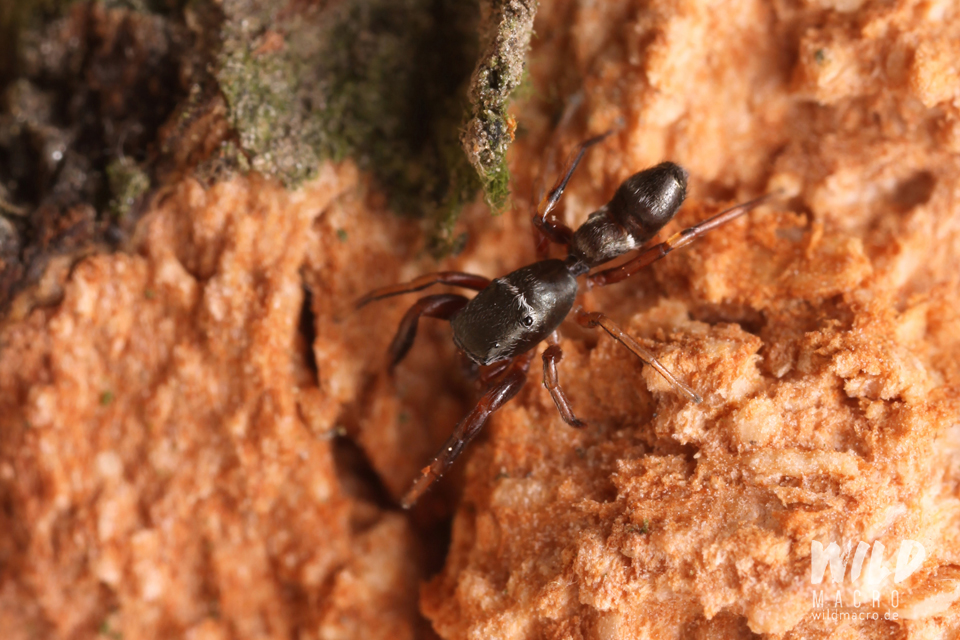
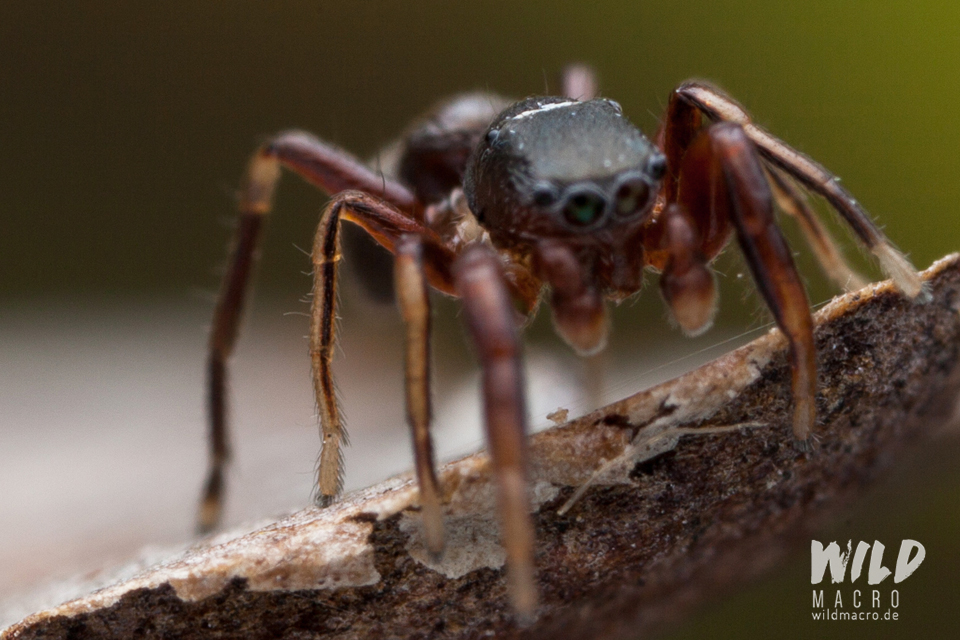
This spider looks (and walks) like an ant
FAQ
What is the spider that looks like an ant?
Myrmarachne. Myrmarachne is a genus of ant-mimicking jumping spiders that was first described by W. S. MacLeay in 1839.
Are Ant Mimic spiders poisonous?
-
Almost all spiders are venomous, and ant-mimicking spiders are no exception.
-
They will bite in self-defense, but their venom is not considered medically significant or dangerous to humans.
-
Ant-mimicking spiders, like those in the genus Myrmarachne, mimic the appearance and behavior of ants to deter predators, as ants are well-defended with bites, stings, and formic acid.
-
Not all ant-mimicking spiders are jumping spiders, and other spiders, such as Aphantochilus rogersi, also exhibit this behavior.
-
is a genus of ant-mimicking jumping spiders that was first described by W. S. MacLeay in 1839.
What are the spider looking ants in my house?
Also known as the black-headed ant. Ghost ants exhibit rapid, erratic movement that resembles small spiders.
Where do Ant spiders live?
Ant spiders are members of the family Zodariidae. They are small to medium-sized eight-eyed spiders found in all tropical and subtropical regions of South America, Africa, Madagascar, Australia-New Guinea, New Zealand, Arabia and the Indian subcontinent.
Which spider resembles ants?
Some spiders employ more than one type of mimicry. For example, the Variegated Ant-mimic Sac Spider employs Batesian and Wasmannian mimicry. Of the many species of spiders that resemble ants, these are some of the most common. 1. Myrmarachne formicaria
What does a spider bite look like?
The appearance of a spider bite can vary depending on the species of spider and individual reactions. Common symptoms include redness, swelling, pain, and itching around the bite site. Some bites may have a central blister or a small ulcer. In severe cases, the bite may cause a more extensive wound, with tissue damage or necrosis. If you suspect a spider bite or experience concerning symptoms, seek medical attention promptly for proper evaluation and treatment.
Why do spiders look like ants?
Ants, in particular, are often aggressive, nasty-tasting, and attack in groups, meaning that looking like an ant is advantageous. Many insects do just this, having evolved to resemble ants. However, it was assumed that spiders, unlike insects more closely related to ants, were less able to mimic ants due to having evolutionary constraints.
Do jumping spiders look like ants?
A predator’s-eye-view of a spider is likely to be from the top. In the jumping spider Synemosyna formica, juveniles mimic small acrobat ants (Crematogaster spp.) and have an ant-like shape from the top and side views, while adults look like a slightly larger carpenter ant (Camponotus spp.) from the top but retain their spider shape from the side.
Which spider species mimics ants?
The Variegated Ant-Mimic Sac Spider mimics ants, specifically those belonging to the genus Crematogaster. In contrast to its relatives, this spider resides in silken apartment buildings made up of numerous separate silken nests.
Do ant-mimic sac spiders look like ants?
The two-banded ant-mimic sac spider does everything that looks like an ant. This spider that looks like an ant in Texas is challenging to tell its differences from the ant unless viewed under a microscope. The two telltales’ extra legs are distinctive features. The two light brown bands on their bodies are only visible when you come closer.
